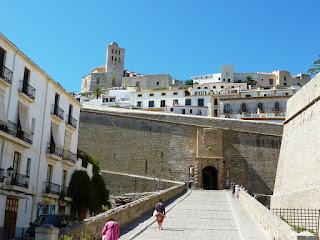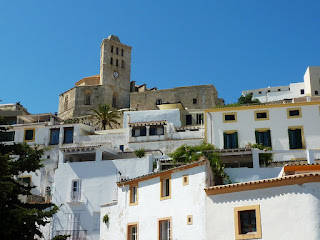We took the bus from San Antonio to the city of Ibiza/Eivissa . It’s also known as the 'white
island' due to the predominance of its white houses. The Ibiza we know is the disco/club central,
the summertime hedonistic capital of Europe . La calle Barcelona is the central point of the city’s
nightlife, based around the Port. We did
not go there. However, there are a number of interesting historical monuments
which offer a bit of cultural, historical and natural richness within the city. We visited the 16th century walled
city of Dalt Vila ,
a UNESCO World Heritage site. The wall
was built by Felipe II in the 16th century to protect the island from pirates
and the Ottomans. Portal
de Ses Taules, with a drawn bridge, is the main entrance to the
Dalt Vila. And once inside, we visited
the Almudaina Castle Archeological Museum Europe . We were
also thinking of venturing into the La Penya neighbourhood, located just below
the Dalt Vila, but the staff in the tourist office was sternly against the idea
as it was ‘not safe’. Instead, she offered a great number of great restaurants
for us to try out. We gladly took her
advice and had an excellent lunch of traditional dishes of paella and fish at a small restaurant just outside the old city.
the Cathedral
View from the Monographic Museum to the town harbor



